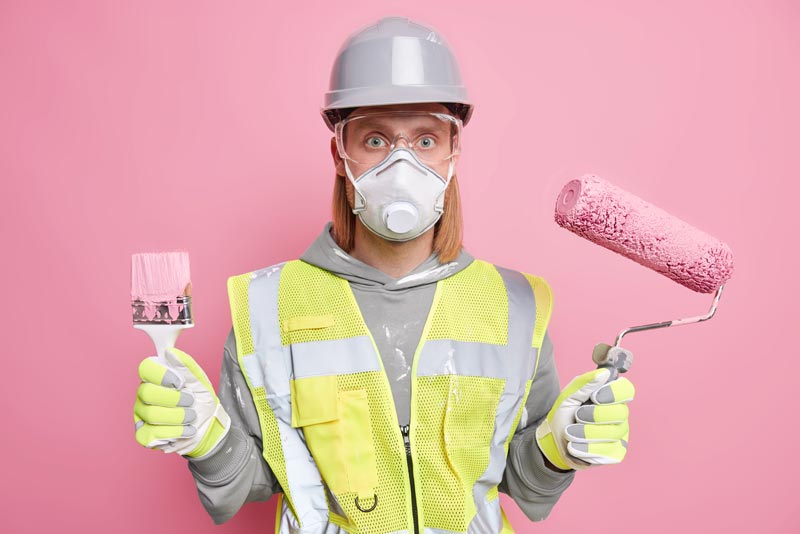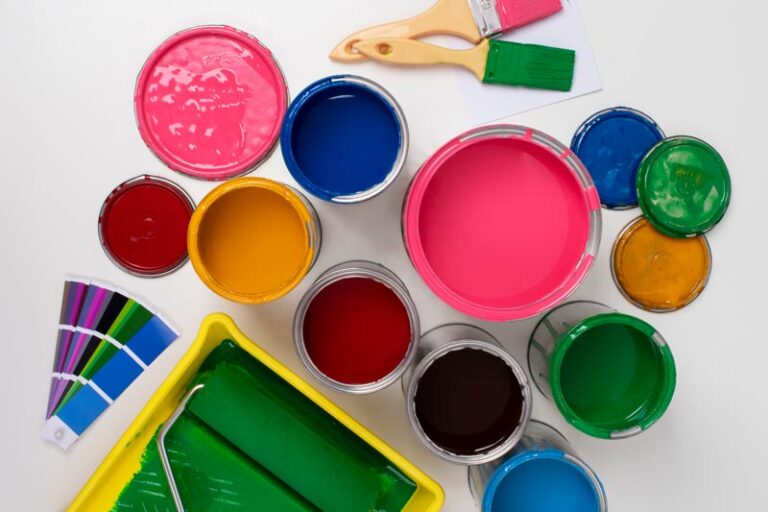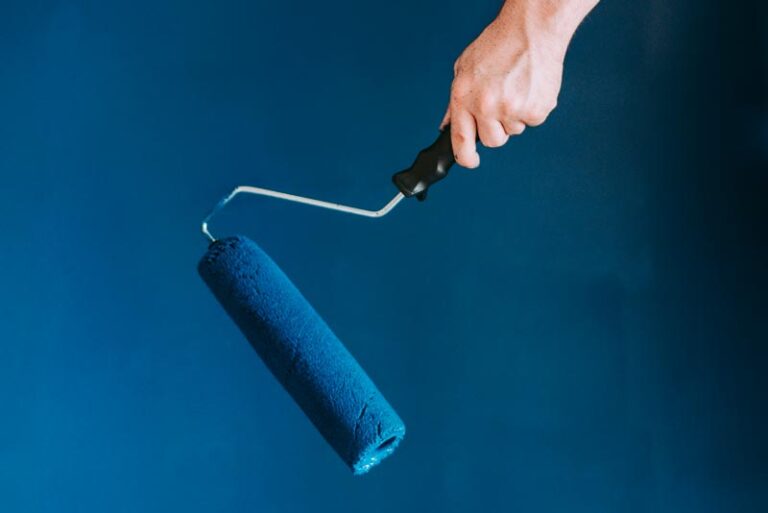- Free Estimates

If you’re planning a house painting project in Glastonbury, CT, it’s important to remember that proper preparation is critical to achieving a successful outcome. From assessing the project’s scope to choosing the right paint and materials, preparing surfaces properly, using the right painting techniques, and performing proper clean-up and maintenance, every step of the process is critical to ensuring that the final result is a beautiful, long-lasting finish.
As a professional Glastonbury painting company, we understand the importance of these steps and have extensive experience providing top-quality painting services to homeowners in Glastonbury and the surrounding areas. In this blog post, we’ll share some of our best tips and tricks for preparing for a house painting project so that you can achieve professional-quality results in your own home.
Assessing the scope of the house painting project is the first step towards achieving a successful painting job. Here are the steps for proper project assessment:
Before starting any house painting project, it is essential to measure the space accurately. This will help you determine the paint needed and estimate the project’s total cost.
To measure the space, use a tape measure to determine the length and height of each wall that needs to be painted. Next, multiply the length and height to get the square footage of each wall. Finally, add up the square footage of all the walls to get the total square footage of the space that needs to be painted.
Inspecting the surfaces will help you identify any cracks, holes, or other damages that must be repaired before painting.
If you find any damage, use spackle or wood filler to repair it, and sand the surface smooth before painting. Painting over damaged surfaces can result in a poor-quality finish that lasts only a while. So, make sure to repair all the damages before painting.
Once you have measured the space accurately and identified any damages that need to be repaired, it’s time to estimate the amount of paint needed for the project. You can use a paint calculator or consult a Glastonbury painting company to estimate the amount of paint. They can help you determine the paint needed based on the space’s square footage.
Painting a house can be messy, and protecting surrounding areas from paint drips and spills is crucial. Here are some tips on protecting surrounding areas during a house painting project.
Before starting the painting project, cover any landscaping and outdoor furniture near the painting area with a drop cloth or plastic sheet. This will protect them from any paint drips or spills that may occur during the painting process.
Painter’s tape is essential for protecting windows, doors, and other areas you don’t want to be painted. Apply painter’s tape around window frames, door frames, light fixtures, and other areas to prevent paint from getting on them. Press the painter’s tape firmly against the surface to create a tight seal. This will help prevent paint from seeping underneath the tape.

Choosing the right paint and materials is crucial for a successful house painting project. Here are some factors to consider when selecting paint and materials.
When selecting paint, consider the type of surface you’ll be painting and the finish you want to achieve. For example, oil-based paints are better for high-traffic areas, as they are more durable and can withstand wear and tear. Water-based paints, on the other hand, are better for moisture-prone areas, as they are resistant to mildew and mold.
The finish you choose for your paint can also affect the overall look of your house. For example, Matte finishes are good for hiding imperfections, while gloss finishes are suitable for highlighting architectural details. Satin finishes are a good compromise, providing a subtle sheen while hiding imperfections.
Using high-quality paint and materials is crucial to achieving a long-lasting finish. When selecting brushes, rollers, tape, drop cloths, and other materials, choose durable products that meet the job’s demands.
Once you have planned and prepared for your painting project, it is time to clean and repair the surfaces to be painted. Proper preparation is essential for achieving a smooth, long-lasting paint job. Here are the steps to follow:
Remove dirt, dust, or grime from the walls, ceilings, and trim. Use mild detergent and warm water to clean the surfaces. Rinse with clean water and allow to dry completely. Consider hiring a Glastonbury painting company for professional cleaning services.
Fill in any cracks, holes, or gaps with spackle or caulk. Sand down any rough spots or uneven surfaces. Remove any loose or peeling paint with a scraper or sander. Hire a Glastonbury painting company for expert repairs and prep work.
Use fine-grit sandpaper to smooth out any rough surfaces or imperfections. Sand the surfaces lightly to avoid damaging the underlying material. Then, wipe down the surfaces with a damp cloth to remove any dust or debris. Consider hiring a Glastonbury painting company for professional sanding services if you don’t have the time and tools to do this task.

Once the primer has dried, it’s time to start painting. Applying the paint evenly and using multiple coats for full coverage is important. You’ll also need to pay attention to the weather conditions, as painting in extreme heat or cold can affect the quality of the finish.
Cleaning the area and maintaining your newly painted surfaces is just as important as the painting process. Here are some tips from the best Glastonbury painting company on how to clean up and maintain your newly painted surfaces.
Once the paint has dried, carefully remove the painter’s tape and drop cloths. To avoid any damage to the paint, slowly and gently remove the tape and cloth at a 45-degree angle.
If you accidentally spill paint during the painting process, clean it up immediately. Use a clean cloth or paper towel to blot up as much spilled paint as possible. If the paint has already dried, you may need a scraper to remove it.
After painting, it’s important to properly dispose of any used materials, such as brushes, rollers, and paint cans. Check with your local waste management facility to determine how to dispose of these materials properly.
Over time, your newly painted surfaces may need touch-ups or repairs. Keep some extra paint on your hand to touch up any areas that may become scratched or chipped. If you notice any cracks or other damage, repair them as needed to prevent further damage.
Achieving a professional-looking finish on your house painting project requires more than just high-quality paint and tools. It also requires proper painting techniques. Here are some tips to help you achieve a professional finish on your next painting project in Glastonbury, CT.
Cutting in is the process of painting the edges and corners of a room with a brush before using a roller. Take your time and use a steady hand when cutting in to achieve clean lines and edges. Use a small brush and paint the edge in short sections, overlapping each section slightly to avoid leaving a visible line.
Work in sections to avoid visible seams or lines when using a roller. Roll the paint in one direction, and then go back over it in the opposite direction to ensure even coverage. Avoid pressing too hard on the roller, which can cause drips and splatters.
Drips and runs can be unsightly and ruin your paint job’s look. Keep an eye out for drips and runs as you paint, and use a brush or roller to smooth them out before they dry. If a drip or run has already dried, gently sand it down and touch the area with paint.

To avoid lap marks and uneven coverage, keeping a wet edge when the painting is essential. Paint in sections and work quickly to keep the paint wet. When you finish one section, start painting the next to avoid letting the paint dry too much.
Different surfaces require different painting techniques. For example, when painting wood, paint with the grain to avoid visible brush or roller marks. When painting metal, use a primer designed for metal surfaces and apply multiple thin coats rather than one thick coat.
If you’re looking for a reliable and experienced Glastonbury painting company, consider Glastonbury Professionals House Painters. With years of experience and a proven track record of customer satisfaction, the company has earned the trust for many homeowners.
As a licensed and insured Glastonbury painting company, Glastonbury Professionals House Painters provides top-quality workmanship and uses only high-quality materials. They also offer a warranty for their work, giving you peace of mind that your investment is protected.
Don’t risk the quality of your painting project by choosing an inexperienced or unprofessional contractor. Trust Glastonbury Professionals House Painters to provide the expert painting services you need for your home or business!